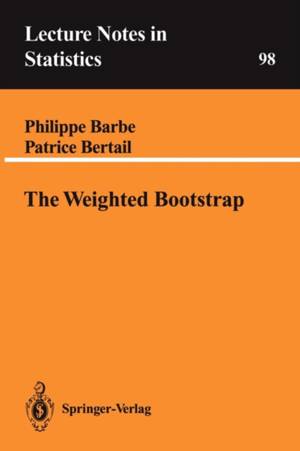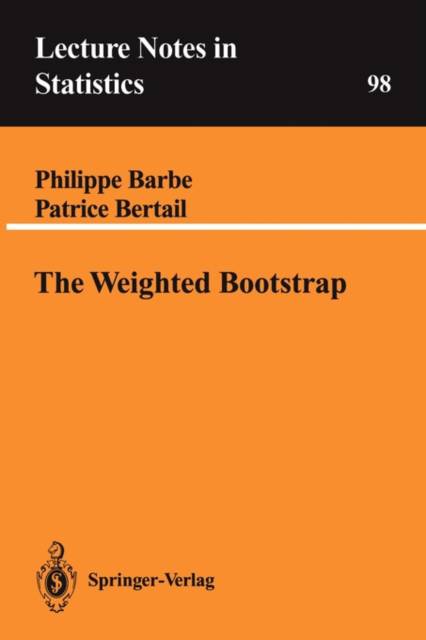
- Afhalen na 1 uur in een winkel met voorraad
- Gratis thuislevering in België vanaf € 30
- Ruim aanbod met 7 miljoen producten
- Afhalen na 1 uur in een winkel met voorraad
- Gratis thuislevering in België vanaf € 30
- Ruim aanbod met 7 miljoen producten
Zoeken
Omschrijving
INTRODUCTION 1) Introduction In 1979, Efron introduced the bootstrap method as a kind of universal tool to obtain approximation of the distribution of statistics. The now well known underlying idea is the following: consider a sample X of Xl ' n independent and identically distributed H.i.d.) random variables (r. v, 's) with unknown probability measure (p.m.) P . Assume we are interested in approximating the distribution of a statistical functional T(P ) the -1 nn empirical counterpart of the functional T(P), where P n: = n l: i=l aX. is 1 the empirical p.m. Since in some sense P is close to P when n is large, n - - LLd. from P and builds the empirical p.m. if one samples Xl ' ..., Xm n n -1 mn - - P T(P ) conditionally on: = mn l: i =1 a - ' then the behaviour of P m n, m n n n X. 1 T(P ) should imitate that of when n and mn get large. n This idea has lead to considerable investigations to see when it is correct, and when it is not. When it is not, one looks if there is any way to adapt it.
Specificaties
Betrokkenen
- Auteur(s):
- Uitgeverij:
Inhoud
- Aantal bladzijden:
- 230
- Taal:
- Engels
- Reeks:
- Reeksnummer:
- nr. 98
Eigenschappen
- Productcode (EAN):
- 9780387944784
- Verschijningsdatum:
- 24/02/1995
- Uitvoering:
- Paperback
- Formaat:
- Trade paperback (VS)
- Afmetingen:
- 156 mm x 234 mm
- Gewicht:
- 344 g

Alleen bij Standaard Boekhandel
+ 279 punten op je klantenkaart van Standaard Boekhandel
Beoordelingen
We publiceren alleen reviews die voldoen aan de voorwaarden voor reviews. Bekijk onze voorwaarden voor reviews.











